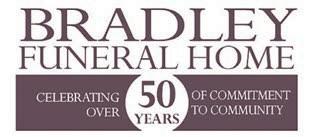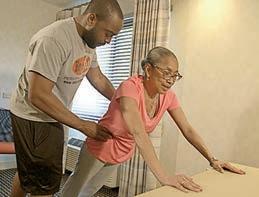NM-00012524 A BLACK HISTORY MONTH CELEBRATION Narratives from Historic Haddonfield’s AfricanAmerican Community South Jersey | February 2023
The history of Haddonfield is long, deep, and rich and the history of Haddonfield’s Black community is equally so. Although this community has never been forgotten, it has been underrepresented in documentation and study. “The Preserving Black Haddonfield History Project” is doing extensive and vitally important work to correct this and properly recognize the lives and contributions of the Black residents of Haddonfield through the centuries.
African Americans were among the earliest residents of Haddonfield. First settled beginning in the late 1600s by Quakers seeking religious freedom in the New World, many early Quakers, including Elizabeth Haddon Estaugh, recognized as the founder of Haddonfield, held enslaved people. As the 18th century progressed, the Quakers increasingly believed the practice to be immoral and became early leaders in the abolition movement.
John Estaugh Hopkins, Elizabeth Haddon Estaugh’s great nephew and heir, was the President of the Gloucester County Anti-Slavery Society and by the time of the American Revolu-
tion, the Haddonfield Quaker Meeting was working diligently to promote emancipation of enslaved people held by their members. In 1776, a book to record manumissions was purchased. In a little less than one year, the book was filled with fifty names of enslaved Blacks who had been freed through the efforts of the Meeting. By about 1790, the Haddonfield Quaker Meeting had no slaveholders among their membership.
The formerly enslaved people soon developed a small, but vibrant free Black community in and around Haddonfield. The community continued to grow throughout the 19th century, with some new residents migrating from the former slave states of the South. By the start of the 20th century, about 10% of Haddonfield’s population was Black, most living in what was referred to as “The Point” at the end of Potter and Ellis Streets and along Lincoln and Douglass Avenues. It was primarily a self-contained community with two churches, a general store, produce market, barbershop and other business establishments to serve the residents.
As was common through-










out our country’s history, racial prejudice and segregation were part of the landscape of ordinary life over the years for Blacks in Haddonfield. Some downtown businesses welcomed them and others did not; Black residents knew which were which. The local movie theater restricted African Americans to a few seats in the balcony. Early in the 20th century, minstrel shows, were held by the high school dramatic society and by local organizations.
Black children began to receive public education in 1869 but were segregated in various locations around town, including two schools specifically built for Black students. Although African Americans began attending Haddonfield High School in the 1910s, the lower grades remained strictly segregated until 1948, when the new state constitution, championed by Haddonfield’s native son, Governor Alfred E. Driscoll, outlawed the practice.
Much of this is captured in the essays of Preserve.
As Haddonfield’s total population experienced great growth throughout the first half of the 20th century, the Black population remained relatively stable. By the 1940s, the numbers began a slow but steady decline. Today demographics list the town as just over 1% Black or African American. The two historically Black churches and some multigenerational Haddonfield Black families remain a vibrant part of the town.
We applaud the dedicated work and effort of everyone working on this project to bring the history of Black experience in Haddonfield to the forefront and incorporate it into the rich heritage of our town.
Douglas B. Rauschenberger
Katherine M. Tassini Borough of Haddonfield Historians
THE PRESERVING BLACK HADDONFIELD HISTORY PROJECT ORGANIZING COMMITTEE FOUNDERS
Rebecca Hilgen Bryan, DNP, APN*
Gregory McMillan, DTh
Lisa Lacroce Patterson
C. Adrienne Rhodes
Joseph Serico, EdD*
Malcolm Talton
Christopher Wolfe*
NOTE: Asterisks denote associate editors/ proofreaders.


HONORARY COMMITTEE MEMBERS
Stacey Brown-Downham
Deborah Garwood

Jennifer Norwood Sheran
David Platt
Doug Rauschenberger
Linda Shockley
Sarah Tambussi
EXECUTIVE EDITOR



C. Adrienne Rhodes
EDITOR

Holly Maiese
REPORTERS
Ben Andrus
Riley Austin
Ava Carpenter
Avery Connor
Lola Cook
Drue Elliot
Ella Foley
Colton Getley
Tommy Grookett
Lauren Hamblin
Breck Herckner
Penelope Incolllingo
Kaitlyn Kouser
Alexandra Leonetti
Matthew Li
Catherine McCarron
Jude McFillin
Julia McHale
Lily Novak
Ben Osawa
Hutch Rhyne
Isabella Ruffolo
Alana Siecienski
William Solak

Mia Swiecicki
DESIGNER
Karen Bannett
PARTNERS
Camden High School Nutrition Program
Haddonfield Alumni Society
Haddonfield Antiracist Coalition



Haddonfield Education Association

Haddonfield Historical Society
Lawnside Historical Society
Haddonfield Memorial High School
The Haddonfield Sun


2 THE SUN SPECIAL SECTION — FEBRUARY 8-14, 2023 SS
A
SPECIAL SECTION
NM-00012473 Valentines Day 14 Party 1206 Kings Hwy N, Cheery Hill, NJ 08034 MUSICA EN VIVO LIVE MUSIC : 5-7 PM Reservation Call / Tell : 8563549999
Foreword
Alfred J. Dansbury, Sr.

November 15, 1948
claims the secret to a happy marriage is to just “live your lives.” He explains, “I like to fish. Don’t break up my fishing rods.” He and his wife respect each other’s interests and values, and that is the key to their marital longevity.

Doris Brown Butler

January 16, 1930
“You will go to college, finish, and succeed,” his mother insisted. Earning a Master’s Degree in Business Administration, a Master’s Degree in Education, a Master’s Degree in Writing, obtaining his real estate license, and writing a book, Alfred Dansbury took her directive to heart. Most impressively, Mr. Dansbury earned his third Master’s Degree in his sixties.
Mr. Dansbury holds fond memories of his time in Haddonfield. Alternating between weekend visits to paternal grandparents in Haddonfield on Douglass Avenue and maternal grandparents in Cherry Hill on Kresson Road, the Dansbury children considered “Haddonfield to be a paradise.” He recalls that he “played back there with my friends, running through the woods, catching snakes, turtles, and frogs.” Living in Camden, he considered the retreat to the suburbs as an escape from “air pollution, noise, police sirens, crime.”
Attending church was a family affair for the Dansburys. He remembers getting “new outfits” and “dressing up.” His maternal uncle was a pastor at Mt. Olivet Church, and his wife’s grandfather served as pastor there in the 1930s.
Mr. Dansbury married his wife in 1976, and the couple have two children. Together for 47 years, Mr. Dansbury pro-
Being accepted into Rutgers—The State University in the 1960s amidst “anti-war, social justice, and Civil Rights Movements was an accomplishment of which he is most proud. He recalls that the university provided buses for students to protest the Vietnam War. Mr. Dansbury marvels, “It was awesome; it was eerie to see that many people—all marching down those streets.” During this period in time, he also became interested in the inequities surrounding war and poverty. He became editor of The Camden Community Newspaper, where he often wrote articles about racial injustices and poverty. Through his study of Black history courses at Rutgers, he developed a passion and appreciation for famous African-American writers. The works of Langston Hughes, James Baldwin, Gwendolyn Brooks, Ralph Ellison, Paul Laurence Dunbar, and Richard Wright resonated the most with him. However, Wright’s Native Son was his favorite read.
The Dansburys have a legacy of breaking color barriers. His maternal great grandmother was white and married to a Black man, his paternal grandmother was the teacher of Haddonfield’s segregated elementary and middle schools, his maternal aunt saved her money from working as a maid for a Haddonfield family to, eventually, buy an eight-bedroom property on Kresson Road so her relatives could migrate from South Carolina to New Jersey. Years later, she built a new house for other relatives on the adjacent lot.
Mr. Dansbury recalls his greatest fear as a child was
“It’s better now. The change has already come,” lifelong Haddonfield resident, Doris Butler, explains as she reflects on her experiences in the community. Her devotion to this town is clear, her strong sense of community and belongingness evident in her recollections. However, Mrs. Butler shared stories of how race often divided the town’s population. Although Haddonfield is often celebrated as an idyllic, picturesque town with tree-lined streets and friendly residents, Mrs. Butler recalls a lesser known history of Haddonfield, one that is not often heard, but important to remember.
As most schools in the United States, Mrs. Butler’s elementary and middle schools were racially segregated. Surrounded by other African-American children, she felt secure and confident. While many can identify with the fear and anxiety related to transitioning from middle to high school,
Mrs. Butler had an extra challenge; she attended school with white students for the first time. She recalls that, “It was kinda hard because that was the first time we had been mixed with the white school, and a lot of the time, we were called names.” Since desegregation was in its infancy, many students and teaching staff struggled to embrace it. “I wouldn’t say [the teachers] were friendly but they were okay. They were not mean if you know what I mean.”
Although it was difficult at times, she truly enjoyed high school. She played field hockey for a year but promptly quit after getting hit in the face with a ball. Even though Mrs. Butler did not play on any other sports teams later in her high school career, she still interacted with her peers. She said, “I was just a friendly person, and I just made friends easy and I didn’t have to be in a club or anything.” She
also developed friendships with Black students who were bussed from the suburban communities to attend high school. Mrs. Butler surmised, “That's why there were more African Americans in the classroom than there are now.” Some histories are difficult to hear or even accept but are necessary to tell in order to accurately represent a dark time. For Mrs. Butler, one of her most vivid memories from her adolescence was a firsthand experience with racism. She explained, “A lot of the stores on Kings High-
please see BUTLER, page 6
Cancer doesn’t wait. Neither should you.
Regular cancer screening can
Many tests are available for free or covered by insurance. Talk to a doctor about which screening tests are right for you.
Age 25+ Cervical screening
Age 45+ Colorectal & breast screening
Age 50+ Discuss lung screening with doctor Learn more

THE SUN SPECIAL SECTION — FEBRUARY 8-14, 2023 3 SS
please see DANSBURY, page 4
save your life.
cancer.org/get-screened
at
Phyllis Jenkins May

March 25, 1943
Phyllis May’s maternal grandparents and other family members moved from Savannah, GA to Douglass Avenue in Haddonfield in search of work. The neighborhood children used their dead end street as a “playground.” There, the children would ride bikes, play hopscotch, jacks, and hide-and-seek. In her neighborhood, she felt safe and happy.
Everyone in the community knew and loved her grandmother and affectionately called her Mama Daisy.



“Mama Daisy was on one corner and down the street Ms. Ross had a corner store. We called it the candy store. We would always get something: ice cream, candy, whatever.” Mrs. Mays’ father was among Haddonfield’s first Black mailmen. He was a whistler.
When he reached Ms. Ross’ store, the children knew he had arrived. At Christmastime, she and her sister also enjoyed opening gifts from the people on his mail route.
As a teenager, she and her friends enjoyed house parties. They would “roll up the carpet” so they could dance. She remembers frequenting the “Ice House” at the intersection of Brace and Berlin Roads. Jerry Blavat frequently staged dance parties there. They also appeared on American Bandstand.
Back in the day, the Camden
County pool was located in Haddonfield. It was within walking distance to most of the homes where African Americans lived, but they could only swim there on Wednesdays. This applied to all Blacks in the County. She learned how to swim at the insistence of her mother and other mothers in the community. They engaged a Red Cross worker for this purpose.

Mrs. May explained how Haddonfield’s Central Elementary School had just been built when it was time for her to go to school. “Morris Brown and I were the first two Black kids to go up to Central School.” Although her attendance there reminds her of The Little Rock Nine, she admits, “There was none of that when I went to school. We just went. We were just two Black kids in kindergarten.”
For Mrs. May, high school was also a positive experience, “I loved high school. I was a pretty good student, I had a lot of friends.” However, Mrs. May remembers that black and white students “didn’t socialize with each other after school. When I left school and the other Black kids left school, we went back to our neighborhoods.” She explains that, although the African-American students did not attend most high school formal affairs, she “volunteered to deco-
DANSBURY
continued from page 3
rate for the proms.” Mrs. May detailed the Shangri La theme. “We had crepe paper hanging everywhere in the high school gym.”
She took college preparatory classes, participated in student council, and was in the band. “Music was a big part of my life. I played piano for the chorus and for the choirs.”
Mrs. May remembers how fellow high school students “kept getting called down to the guidance counselor to make plans for what they were going to do after high school.” Although not among them, she wanted to be a classical pianist and hoped to attend The Juilliard School or the Boston Conservatory. At one time, she also contemplated going to the Katharine Gibbs Secretarial School because she dreamed of becoming a journalist. As Mrs. May loved to write, she thought she could have a career at a magazine.
Mrs. May considers herself to be a bookworm. While she was growing up, one of her favorite places was the Haddonfield Library. She reveals that her mother kept plenty of magazines and other reading material in the house: Ebony, Jet, National Geographic. Furthering her education beyond classrooms was part of her mother’s plan for her two daughters. Mrs. May recalls that on one summer day, her mother was sitting on their enclosed porch with Phyllis and her younger sister. Her mother calmly turned to the young ladies and insisted, “You girls are going to go to college whether I have to work three jobs to get you there.”
She said, “You could be a nurse or a teacher.” Mrs. May remembers looking at her younger sister and professing, “I’ll be a teacher.” Only two options were offered by



her mother: “You can go to Glassboro, or you can go to Hampton.”
The memory behind her decision to attend Hampton Institute, an historically Black college in Virginia, is easy to recall. One of Mrs. May’s neighbors attended Hampton. She showed a postcard to her mother and said “Phyllis would like this college.”
Sight unseen, Phyllis Jenkins May’s mother drove her to Hampton and dropped her off.

To help with tuition, every Fourth Sunday, after church was over, the ushers at the Jenkins’ family church would stand at the back door and hold an offering plate for the “kids that were going to college.”



“I think of all the talents the people of my mother’s generation had that they weren’t really able to use” because people had a tendency to “judge a book by its cover.” Mrs. May contends that this is the greatest limitation on one’s potential. “Never prematurely ‘judge.’ You will be surprised of all the wonderful things you can do.”

For most of her career, beginning in 1965, Mrs. May was an elementary school teacher in the Willingboro and Cherry Hill school systems. After earning the master’s from College of New Jersey, she became a counselor at Cherry Hill West and retired in 2007.
watching the riots and violence that surrounded school integration. Watching news reports that showed images of dogs attacking African Americans, state troopers using force, and firemen using hoses to control protestors was unsettling. “I was scared as heck that they would come up this way and we were going to get chased by police dogs just for going to school.” Decades later, Mr. Dansbury experienced similar opposition. He moved to Boston and accepted a teaching position at South Boston High School in 1976. At this time “The federal government forced the Boston School District to integrate their public schools.” Since they refused, the government put the School District of Boston into Receivership,” taking over control. This decision was met with violent opposition and even death. He explains that, for the two years he was employed there, he had to travel to a location where he would “wait for a police escort to get to the school.” Dansbury admits that, though the state had intervened to enforce integration within the public schools, white students withdrew when the community established “community schools” for white students.
Highly accomplished and content with his life’s work, Mr. Danbury’s advice to young people is to “Find what you want to do and go for it, focus on what you love.”
He continues to serve the public as a Commissioner of the Housing Authority of the City of Camden.

4 THE SUN SPECIAL SECTION — FEBRUARY 8-14, 2023 SS
GUIDE TO Kids & Camp LOOK FOR OUR UPCOMING SECTION MARCH 1 DEADLINE: FEBRUARY 23 For More Information Call 856-779-3800 x6837 WilsonR.Bradley, OwnerNJLic.No.2917 JillBradleyIngram, ManagerNJLic.No.4226 BURIAL&CREMATIONSERVICES 601Rt. 73 SouthMarlton,N.J. 856.983.1005 www.BradleyFHMarlton.com NM-00011204 Wilson R. Bradely, Owner Lic No. 2917 Jill Bradely Ingram, Manager NJ Lic. No. 4226 601 Rt. 73 South Marlton, N.J. 856.983.1005 • www.BradleyFHMarlton.com BURIAL & CREMATION SERVICES NM-00012500
Kristine Kirby Reynolds
November 10, 1944
This is where African Americans lived. However, having developed an appreciation for the performing arts early-on, “There wasn’t anything in Haddonfield for entertainment for me.”

She enjoyed dancing and had the luxury of taking lessons in Camden, NJ, where there was a more diverse population and less racial tension stemming from bias against people of color. Yet, this did not preclude danger.

“Surely goodness and mercy shall follow me all the days of my life: and I will dwell in the house of the Lord forever.” While facing discrimination and other forms of adversity, Kristine Kirby Reynolds heavily relies on biblical scriptures like Psalm 23:6 to find comfort and joy.
While growing up African American in the predominantly white borough of Haddonfield in the 1950s and ‘60s several national incidents presented cause for hope and optimism as well as despair. With the increasing visibility of proponents of non-violent activism—like the Rev. Dr. Martin Luther King, Jr.—the appeal of the Civil Rights Movement widened; this, ultimately, led to the passage of the Civil Rights Act, which prohibits discrimination in public places. It was preceded by the Equal Pay Act. Earlier, John F. Kennedy’s 1960 presidential campaign promised a more equal and just America. Along the way, Motown’s tunes energized America—across racial lines. Yet, these good fortunes were offset by the Cuban Missile Crisis, the assassination of a beloved and progressive president, and increasing engagement in the unpopular war in Vietnam. And, in her hometown, progress was slow to come.
Mrs. Reynolds recalls, “It was a close-knit neighborhood” and “you could track it off: Fowler Avenue, Ellis Street and Potter Street, Douglass and Lincoln that went into Ellis Street.”
Jacquelyn Johnson
Mann Roberts
January 7, 1939
“I’ll never forget it.” Mrs. Roberts recalls a time when an elementary school teacher asked the class where their ancestors came from. Causing much embarrassment, the teacher announced, “We know where Jackie's ancestors came from, Africa.” Mrs. Roberts laments that “they never taught us Black history in school, we only studied the white history.”
Mrs. Reynolds recollects, “One day, on the way home (from dance class), someone had thrown a knife at me and cut my pocketbook.” The perpetrators were a group of young white men in a car. Mrs. Reynolds surmised that this act of hatred was racially motivated. She adds, “It was what I would call the only negative experience that I had…you know everything else was just underlying things….”
Despite being part of a marginalized group, Mrs. Reynolds participated in several activities offered at Haddonfield Memorial High School. As the drum majorette, she proudly led the band during football games, Christmas and Memorial Day parades, and other special occasions. The whole community would come out to celebrate. Mrs. Reynolds recalls being elated when anticipating seeing her photograph printed in The Town Crier for leading these events; however, she was not pictured on a single page. She reflects on the implied message: “Being a Black person in Haddonfield, and being upfront, was not where I should be.”
While being the drum majorette was a source of pride and fun, she could not help but feel “invisible.'' Ralph Ellison’s critically acclaimed novel Invisible Man addresses the complexities of living in a society by which one is essentially ignored. In the end, his central character goes crazy. Yet, this would not
please see REYNOLDS, page 7
The desegregation of Haddonfield’s elementary schools began in 1948 with the closing of the Colored School on Lincoln Avenue. State laws outlawing segregated schools recently came into play. Not long after this, the last all-Negro unit in the Armed Forces was abolished by desegregation, too.

Mrs. Roberts and her fellow students were integrated into Central Elementary School. Due to the political impact of integration as well as the possibility of protests and violence, armed guards escorted the children into the school to ensure their safety. Fortunately, there was no violence on that historic day.
Mrs. Roberts shares, “That’s what I loved about Haddonfield. There was change. That’s a wonderful thing. When I was growing up, I didn’t know about segregation and all that. I just figured that’s where we’re supposed to be. We stayed in our place.” Reflecting on her experiences—now—however, Mrs. Roberts admits “segregation was powerful in Haddonfield.” Her mother defied the normalized separation of races by intentionally sitting in the non-colored section of the movie theater. According to Mrs. Roberts, “mother was tired of [segregation and unequal facilities] and felt like it was time. Someone had to do it.” Although her mother was given threatening looks, she remained seated until the conclusion of the movie. Her mother’s lesson of stoicism and confidence inspired her daughter to resist and challenge acts of racism and injustice. However, it was not lost on any-
one that the theater closed for good within weeks of this courageous act.
Jackie Johnson Mann Roberts has faced racial discrimination throughout her life. One of her earliest experiences entailed being rejected from the high school’s cheerleading squad. Revealing the sustained trauma of this event, she exclaimed: “I knew I could dance!”
Feeling terribly unfulfilled during the high school years, she opted not to complete studies there. She went to Camden County College to attain her General Equivalency Diploma and was on the Dean’s List. Subsequently, she married a fellow HMHS student. Together, they had two children. Her son had special needs and passed away a few years ago. Her daughter, who graduated from HMHS and became an underwriter in the insurance industrry.
Notably, in the late-1980s, Mrs. Roberts became the first African American to be hired in an administrative capacity at Haddonfield Borough Hall. Although apprehensive about working in an environment lacking diversity, her fears would soon be assuaged. Mrs. Roberts shares, “They welcomed me and treated me as one of their own.” She feels proud to break the color barrier, not only professionally but personally, forming friendships with an otherwise all-white workforce and explains that she lives by a simple tenet: “Always be nice-no matter what—and hold your boundaries. Be peaceful with others no matter what happens. Hold your boundaries.” This philosophy helped her overcome personal and professional adversities.
Generally, despite facing problems growing up in a Caucasian-dominant town, her childhood was happy. She found comfort in her family; nine siblings brought a sense of community to her home life. This second oldest child, Mrs. Roberts shouldered responsibility for her younger
siblings as she proudly watched her father serve as one of the first Black mail carriers in town, paving the way for other job opportunities for African Americans.
In sharing a sentimental experience with her father, who had been an HMHS track star, she reveals: “My brother and my sister were on the mail truck, and my father took a picture.” Simple moments like this, which so many people take for granted, are valued by Mrs. Roberts, because they were often off limits to people like her.
Being so young, Mrs. Roberts didn’t realize the significance of the progressive steps her father took toward achieving equality. When she approached adulthood, Mrs. Roberts came to understand the power of her father’s decisions, would break barriers herself, and see her brother-in-law become Haddonfield’s first African-American police officer.
Having been born in her parents home on Potter Street more than eight decades ago, her lasting memories of this historic borough are fond. In retirement, she has a larger residence in an area populated by more country-esque landscapes. Nonetheless, she says: “That (Haddonfield) was my home. No matter what, it was my home. No matter how bad things were, it was my home and it will always be my home. I'll never forget Haddonfield. Never. Even with the good and the bad, I love Haddonfield.”

THE SUN SPECIAL SECTION — FEBRUARY 8-14, 2023 5 SS
Wilbur Robinson
September 3, 1943
"Moooo," he taunts the aggressive bull from the safety of the fence post and stared him down in defiance. Although his father warned his siblings and him to stay away from the bull that "had actually gored people in the past,” a young Wilbur Robinson cannot resist the temptation and thrill. He also cannot refuse his sister’s dare and persistent instigation. “Go ahead, brother,” she urges.
“Mooooo,” he repeats, still bating the animal that can quickly end his life. His siblings laughed and cheered at such bravery from a six-year-old child. His father, on the other hand, was not amused and orders the children to “go to the house and get a switch.” Mr. Robinson understood that to mean that “someone was getting a beating.”
As a child, life on Mr. Willis’ dairy farm in Cherry Hill, NJ, was more than enough to satisfy the curiosity and expel the energy of the Robinson children. While their father was busy working on the farm, the children pranced around in epic battles of cowboys and Indians. Mr. Robinson recalls a time when he was supposed to be taking a nap but, instead he sneaked out of bed and danced around his room in one of his sister’s dresses. His father did not enjoy this performance. He gave young Wilbur “one of the best whippings of [his] life.”
The family was tight-knit and the children were each other’s most beloved playmates. They did not know or understand the racial tension and division of the era.
As a pre-teen, Mr. Robinson learned the importance dedication to a goal and teamwork. He was privileged to be one of three African-American players on the local Little League baseball team. Not all competing teams welcomed African Americans on the field and he recalls having racial slurs hurled at him by unwelcoming fans from the opposing teams. Despite the deterrents, in 1955, his team won nine consecutive games to qualify for the championships and, ultimately, became the first integrated team to advance to the World Series in Williamsport, PA.

Register Now!
Beginner Bridge Classes

Saturdays, 1-3 pm, beginning February 4
Tuesdays, 6:30-8:30 pm, beginning February 7

Wednesdays, 9:30-11:30 am, beginning March 1

Defense Bridge Class
Wednesdays, 4-6 pm, beginning February 8
In 1956, for the first time in history, Mr. Robinson's team competed in consecutive World Series Championships. The stands were filled with fans cheering for the eleven- and twelve-year-old players. “We were signing autographs just like the big guys,” he smiles in fondly recalling. Although his team was defeated by the Roswell Hondo League, Mr. Robinson admits that his participation on the team served as inspiration for future African-American athletes and credits Coach Bauer with “not only teaching us baseball skills, but how to lose with dignity.”
The Batesville area, which is a section of Cherry Hill that was largely populated by African Americans, is celebrated for producing some of the towns most accomplished competitors in sports. It was not lost on many that American culture was significantly re-charged when Jack Roosevelt Robinson became the first African American to play in Major League Baseball; starting at first base for the Brooklyn Dodgers in 1947.
Mr. Robinson attended and

BUTLER
continued from page 3
way, you could go in them but you couldn’t try on anything. At first when you go in there and you find that you can’t try it on, it makes you angry, but then after a while you realize, well, you just don’t go in there.” Although there were never posted signs that restricted Black customers, Mrs. Butler explains that it “was just understood.” Other local stores had similar discriminatory policies. Mrs. Butler remarks that “you could buy ice cream, but you couldn’t sit down at a table and eat it at the store.” She indicates, however, that the Franklin Simon department store on Kings Highway ushered in a new era for Black shoppers. “Franklin Simon came and they had African Americans working there as [salespeople] and, then, you could go in there and could try [on] anything you wanted.”
Other than riding her bike or occasionally going to the Franklinville Skating Rink if
graduated from Delaware Township High School (now Cherry Hill West). Then, after graduating from college, he entered into the U.S. Army, where he completed a fourteen-month tour in Vietnam.
Mr. Robinson was assigned to the artillery battery unit, but admits that he wasn’t “military-minded.” He was terrified of war and recalls the terror of “shooting, guns going off, and hiding under tables.”
The “brotherhood” he shared with fellow African-American soldiers is undeniable. He also notes that “racial tension was always present, but it wasn’t really hostile because we had other things to worry about.” Once their engagements ended, the tertiary camaraderie that existed between soldiers from different races “went back the way it was before we met.” After his required term, Mr. Robinson left the military altogether.
He is affectionate about Haddonfield landmarks. As a young man, he enjoyed fishing with his “Batesville buddies” in the Cooper River pond just off of Kresson Road, opposite the Little League
she could get a ride, Mrs. Butler recalls that there wasn’t much to do for young people. Many African-American residents of Haddonfield and its neighboring communities frequented the Cotton Club and other establishments in The Park in Lawnside to socialize with a larger community of Blacks. Although she was not of age, she recalls, “The Cotton Club had live entertainment, and it had a bar.” She remembers the time she sneaked in one door of the club as a teenager only to be “walked out by her neighbor who was a bouncer there.”
The Park was a carnival-type, bustling hub of barbecue and soul food eateries and saloons, which attracted hundreds of mostly African-American patrons from Philadelphia to Atlantic City most weekends during summer.
For over ninety years, Mrs. Butler, who was born and raised on E. Park Avenue, has called Haddonfield her home. What she loves most about her hometown is its tight-knit community. She reminisces about having
baseball fields. In the winter, they would ice skate there. He also remembers there was a fresh water spring by the pond and how he used to fill containers to drink water “that was really nice and clean.”
Mr. Robinson’s friends and family especially enjoyed Haddonfield’s Fourth of July celebrations; most memorably, the fireworks display. In addition, since one of his brothers was a “big kid,” he always won the annual softball tossing contest.
After the military tour, he married Anne B. Robinson. The couple have a biological son, Ako Obafemi; Obafemi is a West African name meaning the king loves me. The Robinsons also fostered three children to adulthood, Gale, Lisa, and Adam.
Mr. Robinson’s career was in insurance sales. He retired from Allstate after thirty-seven years of service. For years, when visiting his parents’ home on Ellis Street in Haddonfield, he was admired as a man in a suit with shiny shoes by many local youngsters.
block parties that extended several blocks. “We would shut down the end of the driveway and the neighbors would bring out food and everybody would get to know each other.” She also recalls the community parenting style, where everyone supported one another. “If you did something bad and the neighbors saw you, your parents would know.” All children in her community knew the most basic tenet of the neighborhood: “You better be in the house by the time those street lights went on.”
From a rich history of love, family, and community, Mrs. Butler urges others to not “judge a person by their color. We're all the same.” She acknowledges that, although her path was more difficult, her children and future generations can live more harmoniously once they realize how similar all people are. As Mrs. Butler explains, “Things have really changed in Haddonfield. For the better. And I hope they stay that way.”
6 THE SUN SPECIAL SECTION — FEBRUARY 8-14, 2023 SS
Call or email for information 856-795-7529 ~ FB & TW: gamefriendzy Online ~ https://www.gamefriendzy.com 7 Carnegie Plaza, Suite 400, Cherry Hill, NJ NM-00012494
Dyann Waugh, MD, MS, MPH, FACOEM

“You’re just as smart; you’re just as good; you have just as much on the ball. . . you can do anything you want, don’t let anyone tell you that you can’t,” Dr. Dyann Waugh explains as she reflects on her mother’s words growing up as an African American in Haddonfield, NJ, in the 1950s. Dr. Waugh grew up in a serene, newly built home on Bellevue Avenue. In the early years, she attended Central Elementary School and Haddonfield Memorial High School. Signaling her leadership potential, even
REYNOLDS
continued from page 5
be Mrs. Reynolds’ fate.
Mrs. Reynolds never experienced legal segregation in school. Yet, African-American students were on the periphery. She affirms, “It was integrated, but, you know, there were certain things you didn’t do and you didn’t attend or participate in, and although you were there (in the school), you were not a part of it.”
One of those underlying things for Mrs. Reynolds was the limited opportunity and support to further her education after graduation. She explains, “I did go to college, but I didn't go to college right out of high school.” She elaborates, “When I was in high school, I had a guidance counselor who told me I was not college material and the only thing I would be able to be was a bookkeeper. That did not guide me to college.” However, in her late-twenties, after being hired in a clerical position for Curtis Publishing, Mrs. Reynolds was accepted into Rutgers-The State University-Camden Campus. She majored in urban studies for a year before leaving to work at Camden County College. After working there for a few years, Mrs. Reynolds accepted a new position at Cooper Hospital. Through her
June 5, 1946
though she was one of just six African-American students during high school, Dr. Waugh rose to head the Color Guard. She was the first African American to do so.
Because her father was one of few African-American physicians in Camden County and this demanded working long hours, Dr. Waugh’s mother was her primary support throughout her childhood. She routinely assured her daughter that she was “perfect” the way she was, and that she had just as much to offer the
twenty-six years of working in Camden, she reveals, “I have watched [Camden] go through a regressive stage where it was falling apart… It became one of the most dangerous cities in the country in the process of being rebuilt.”
Shortly after graduating from high school, Mrs. Reynolds married and moved to Camden. She has four children and pridefully calls them the “greatest achievements” of her life. She explains, “I’m most proud of my kids. My children are fantastic…..” They work in a number of professions: education, nursing, and performing arts. She celebrates that her children have more opportunities and that “they are viewed as individuals and not put into a category because of their race.”
To a large extent, she credits their disposition to the appreciation she developed for a sound academic foundation in her hometown. This significantly affected choices she made about their primary education. All of them attended Catholic school until ninth grade. This decision also was precipitated by a chance conversation she had with an elementary school-age neighbor. When she asked, “What do you want to be when you grow up? He replied: ‘Nothing.’” She thought: “My children will be well-educated. They will be ‘something.’”
world as the other children in Haddonfield. With this emotional and psychological foundation, Dr. Waugh endured all twelve years of school in a place where many didn’t think she belonged.
Throughout high school, Dr. Waugh coped with being one of the only African Americans in the entire building. She explains that being in such a small minority group was “very isolating,” and most of her social network was outside Haddonfield. For the most part, the few friends Dr. Waugh connected with in school were Jewish “because it was like we were all outcasts together.”
Her favorite topics were English, Latin, French, and Biology. Dr. Waugh admits that Physics and Chemistry were the bane of her school career, so her parents and a classmate’s parents hired a tutor. They were the courses necessary for medical school. Temporarily, she “kinda gave up that dream,” and looked into a different path.
After graduating from high school, she attended American University in Washington, DC. There, she studied anthropology, zoology, and social science courses. She was admitted to an anthropology Ph.D. program, but it conflicted with her position in the Peace Corps, so she declined. After returning to the United States from a stint with the Peace Corps, she decided to pursue a master’s degree in Nutrition. Dr. Waugh later began consulting for physicians, as well as providing young professionals with dietary improvement plans. Although this work was gratifying, she sensed colleagues didn’t take her seriously because she lacked a medical degree. So, she attended Howard University to complete the requisite science courses, graduating from Howard University College of Medicine in 1977.
Dr. Waugh’s career in medicine is impressive. She retired as Associate Medical Director for the U.S. Postal Service and consults part-time for the federal government.
She cautions young people not to let anything prevent them
from achieving their goals: “If you look ahead and see a hurdle, you just figure out how to go under it, over it, or around it… once you get past it, you don’t look back.” She stresses that there are different specialties and ways to practice medicine. For example, she started three years of residence in radiology but became dissatisfied by the second year. Rather than continuing along this unfulfilling path, Dr. Waugh researched options and decided to pursue occupational and environmental medicine.
When she was twenty-two years old, Dr. Waugh and her husband made a difficult choice. In a desperate attempt to keep her husband from being drafted, they decided to join the Peace Corps. Dr. Waugh explains how she was influenced by an old friend to join. She was told that she could travel to Africa to learn about her ancestry, while also doing meaningful, fulfilling work. They were sent to a small village in Kenya, East Africa. It was located ten miles from the nearest town and fifty miles from the nearest city. They taught at a local harambe school; a school built by the people in the area. Although they had no running water and other obstacles, they taught there for two years and, eventually, a four-year government high school was built in their former village. Reflecting the values imparted through her upbringing as a Friends Meeting member, working at a school while in the Peace Corps was very important to her. Dr. Waugh advised her students to “not be afraid to ask for help; do not think you're too dull or too slow; don't be your own worst enemy.” She also advised them not to give up, and to keep trying and asking until they found the right person. “That was a very formative experience for me. I had the opportunity to work in a different culture and learned a different language to do all of that. It also gave me time to think about what I wanted to do when I got back.”
People of faith know things don’t always work out the way we believe they should. Dr. Waugh’s childhood home no longer exists. It was the only African-American-owned property in that

section of Haddonfield and its purchase required a Straw Buyer. Soon after she sold it, following her parents’ death, it was demolished by the new owner.
CONTENT BELOW EXCEEDS SPACE LIMITATION
REPORTER’S NOTE: Dr. Waugh’s story sheds light on a significant, historic period in Haddonfield and America. She spent a substantial amount of time growing up in a place where she was an outcast, but she persevered and rose above contempt. After the Peace Corps, she learned valuable lessons about human compassion. She carries these virtues to this day. Her life is one of displaying great acts of courage for the time in which it has taken place. She sets a great example for those who feel as though they don’t quite fit in.
THE SUN SPECIAL SECTION — FEBRUARY 8-14, 2023 7 SS
LOOK FOR OUR UPCOMING SECTION COLLEGE PREP GUIDE FEBRUARY 15 DEADLINE 2/9 Call for Information (856) 779-3800 x6837
Nancy Kirby





April 20, 1940


Clunk! The silver axe slaughtered a plump chicken. Alternatively, its neck was rung by the powerful hand of her neighbor’s grandfather. A young Nancy Kirby and the other children gazed in awe while the chicken ran aimlessly around. As the bird fell to the ground, it was picked up and carried off to be prepared for supper.
In 1940, in the small, predominantly white town of Haddonfield, NJ, Ms. Kirby was born into an African-American household consisting of her mother, grandmother, and eventually her younger sister, Kristine. Ms. Kirby grew up with many family traditions, most important among these was Sunday dinner. During these weekly dinners, neighbors would gather for a feast centered around a main course often bred and raised right in her backyard or nearby, such as beef, lamb, chicken, or quail. The adults would engage in conversation. Some would even drink her grandmother's famous dandelion wine—which she would make despite her refusal to drink due to high religious principles. Occasionally, the minister from Rhoades Temple United Methodist Church of Saddlertown would join them, praying over the food and creating traditions that would help mold Ms. Kirby into the virtuous woman she is today.

Ms. Kirby attended an integrated kindergarten. Then, from first to approximately third grade, even though a law had been passed in 1947 designed to end overt segregation in New Jersey, she attended the still-segregated two-room Lincoln School on Lincoln Avenue in Haddonfield. This school, which is now a senior residential facility, is where she met the teacher who made the greatest impact on her as a person and scholar, Mrs. Theresa Marvel Dansbury. Ms. Kirby reflected, “I have always been an excellent student, and that's because of the things and the training I got
from Mrs. Dansbury.” The Lincoln School did not desegregate until




Haddonfield resident Alfred E. Driscoll was elected Governor of New Jersey. As Ms. Kirby recalls, it was an “embarrassment to him that the school system in his community was not integrated.” Under his leadership, Haddonfield schools finally did integrate, and Mrs. Dansbury expected to continue teaching in her hometown. Sadly, though, white parents did not want a Black woman teaching their children. With the help of the NAACP and other organizations, Mrs. Dansbury fought to remain an educator in Haddonfield. She won that fight, but she was not given her own classroom. Instead, she became the reading teacher at Central School. Ms. Kirby laments that more students did not get the chance to have Mrs. Dansbury as their classroom teacher, as they not only missed out on her general teaching excellence but were most likely not taught the invaluable lessons on African-American history that she infused into her curriculum.
After eighth grade, Ms. Kirby attended Haddonfield Memorial High School. Even though the high school was integrated, the students and even the staff treated African-American students differently. The school had an annual college fair which was invite-only. Not a single Black student was asked to attend the fair as the counselors did not expect them to advance to college. Despite that prejudice, Ms. Kirby was determined to excel as a scholar and, to the surprise of counselors who did not know she had applied, was accepted to the University of Pennsylvania and Temple University with full tuition scholarship offers. Her mother had other plans for her, though, and Ms. Kirby ended up attending Bennett–an historically black women’s college in Greensboro, NC–as a sociology and psychology major. It was here that she took her first


powerful steps as an advocate for Civil Rights.




In 1960, a group of male students from the North Carolina Agricultural and Technical College staged a sit-in after being denied food service at a local Woolworth’s because of the color of their skin. Ms. Kirby recalls that “most people didn’t know that this plan had been organized by the NAACP chapter at Bennett College, and so–in recent years–the history has been corrected. Now, the Bennet women get credit for the idea and organization.” Joining other students from their local chapter of the NAACP, Ms. Kirby participated in the sit-in, defying her mother and grandmother’s directive not to get involved. She remembers their clear missive when they intoned, “We already have our tickets to come to your graduation.” However, she was compelled by a force greater than academics. Along with many of the protesters, Ms. Kirby was arrested for trespassing, disorderly conduct, and disturbing the peace.



One memory from the experience that resonated most with the young Ms. Kirby occurred when she was being processed for bail bonds. She recalls “a little woman who reminded [her] of her grandmother. She had on white gloves and had a pocketbook over her arm like the queen.” She was the owner of a Greensboro funeral home and someone who Ms. Kirby considers an “unsung hero”: she believed in
please see KIRBY, page 10





8 THE SUN SPECIAL SECTION — FEBRUARY 8-14, 2023 SS
THE PRESERVING BLACK HADDONFIELD HISTORY PROJECT PLEASE SUPPORT OUR WORK. ORDER THE COLLECTOR’S EDITION PRESERVE: NARRATIVES FROM HISTORIC HADDONFIELD’S AFRICAN-AMERICAN COMMUNITY @ $20.00 Call 917-497-8874 OR EARMARK DONATIONS TO HADDONFIELD ALUMNI SOCIETY FOR THE PRESERVING BLACK HADDONFIELD HISTORY PROJECT c/o HADDONFIELD EDUCATIONAL TRUST PO BOX 178, HADDONFIELD, NJ 08033 PRESERVE SIDING & WINDOWS We’ve Got Your World Covered A DIVISION OF WORLD CONSTRUCTION NJ LLC Owner Operated for 20 Years Fully Insured & Licensed #13VH11028100 Financing Available Voted #1 Best in Class 2021 HOUR Emergency Service 24 QUALITY WORKMANSHIP, SPECIALIZING IN Shingle • Flat Roof • Metal Roofs • New Roofs Re-Roofs • Roof Repairs • Masonry Restoration Chimney Repairs • Siding • Windows • Doors Get two Legitimate Estimates ...and we guarantee the lowest price. Mention The Sun and Get the Best Price Guaranteed! Follow us on Facebook Serving All of South Jersey CALL TODAY! 856.882.8421
































































































































































































































































































































































































THE SUN SPECIAL SECTION — FEBRUARY 8-14, 2023 9 SS Are you looking for a fun day out with your kids as the weather starts to get warmer? Join the Sun Newspapers for our South Jersey Kids Expo! This event is free, but pre-registration is requested for all attendees For vendor opportunities, email michelle@newspapermediagroup.com KIDS expo The first 100 pre-registered families receive a swag bag from our vendors! MARLTON FIELD HOUSE 785 E Main St, Evesham Twp, New Jersey 08053 Sat., March 25 • 11am-3pm
Nineteen fifty-seven was a tumultuous and historic year for the United States. President Eisenhower sent federal troops to ensure safe passage for the Little Rock Nine to enter a white high school in Arkansas, Philadelphia’s own American Bandstand became a national sensation, and “Jailhouse Rock” by Elvis Presley hit the airways. It was a time of guarded optimism, as lawmakers enacted new legislation to ensure equality and the protection of the rights of all Americans. The Civil Rights Movement spread across the nation, demanding equal rights in spaces of work and education. Segregation was coming to an end, but the racial divide in small-town America was still apparent. Reverend Calvin Ronald Woods, Haddonfield Memorial High School Class of 1957, was one of few African-American students in Haddonfield at this time. His story helps shape the Haddonfield narrative.
Born on November 8th, 1938, in Saddlertown, NJ—an historic community within a town, now, known as Haddon Township— Reverend Woods recalls feeling a sense of security and comfort there. In addition to living with his parents and three older sisters, his aunts and uncles lived nearby. He was surrounded by people who looked like him, attended the same church, and valued the same things.
After attending elementary and middle school there, he had the choice of going to Collingswood or Haddonfield Memorial High School. Following in his sisters’ footsteps, he chose HMHS.
KIRBY
continued from page 8
the cause so deeply that she was willing to risk her business and her personal safety when she posted bail for Ms. Kirby and her classmates. She looms large as a “champion and giant” in Ms. Kirby’s life history.
Reverend Calvin Ronald Woods
November 8, 1938
He shares that the transition at times was a bit challenging and uncomfortable. “You were kinda new, very new… not too many people I knew came here.” Although his race somewhat marginalized him, Woods was not deterred: “All the things you go through, all the things you experience, prepare you for life.” It is with this tenacity and strength that Rev. Woods overcame the racial or social barriers he encountered.
Transportation to school was not available, so he trekked to school every day. “There was no bus that came here… basically, I walked. It was quite a walk from Saddlertown to Haddonfield. Whether it rained or snowed, you still had to make it.”
Woods’ affinity for mathematics and his love for education allowed him to excel in school. Because he scored well on placement exams, he was enrolled in advanced math courses.
“The love of math started with Mr. Beer here at Haddonfield,” recalls Woods. The Reverend credits his teacher with having a significant role and positive influence in his life. “Mr. Beer actually encouraged me to go to school to be a teacher, understanding my love of math and education.” At this time, Rev. Woods was not sure which path he would choose after high school. He was considering an invitation from his town’s mayor to join the National Guard; however, Beer’s recommendation resonated with him. He recalls that Mr. Beer questioned him about what he would do after his time in the service.
He urged Rev. Woods to think of his long-term future and the marketable skills he would need to have without a college degree. Grateful for the support and vote of confidence, he proudly attended Glassboro State College, which is now known as Rowan University, in the Fall of 1958. He majored in History and minored in English but changed his major because the “love for math stayed with [him].” At that time, Glassboro didn’t have a math major program, so he took additional classes at Rutgers-The State University in New Brunswick and Camden.

After graduating from college, he went on to teach math at Cherry Hill High School for nearly four decades before retiring in 2011. When Rev. Woods was not teaching, he traveled to different states preaching to young people. He once declined a position to serve as pastor for a Black congregation, yet changed his mind when he encountered a small church that could not afford one.
“I was teaching, so I didn’t need the money, so I said OK I’ll serve there.” Acceptance of this position began Woods’ lifelong pursuit to help others and minister messages of his faith.
During high school, he sought socialization in surrounding towns. Although he played many sports and made friends easily, he opted to walk to Lawnside or even Camden after school most days to be part of a community of Black teenagers. The walk to Camden was almost five miles, but he reasoned that the bus would cost ten to fifteen cents. He
also recollects that “there weren’t many (African-American) young people'' in Haddonfield, which only added to the fact that there “wasn't much to do.” However, he recalls playing basketball occasionally with friends and HMHS classmates at the “church on Warwick Road.”
Lawnside offered a diversity that Haddonfield didn't have, as well as an abundance of activities, such as dance parties and barbecues. “Down near The Park they had barbecue places…you had this one place you could go and dance, I don’t think it cost anything. I think they made their money by selling sodas and hotdogs and hamburgers—whatever you wanted—while you're there."
Life experiences help him to believe that, “Everyone has gifts and talents and, if you use them to help others, it is never wasted.” As evidenced by his participation in various charity organizations and boards for the underprivi-
leged, Rev. Woods has dedicated his life to helping others. This isn’t just charity work for him, this is what he enjoys, what he does for “fun.” Whether it is distributing donuts to a Camden food pantry or offering to “carry out something to the car if it is too heavy [for others] to carry,” his kindness and community contributions were recognized by the Haddonfield Alumni Society in 2019 when he received their Lifetime Achievement Award.
Despite her arrest, Ms. Kirby graduated from Bennett and went on to become a social worker and, subsequently, a Director of Admissions for Bryn Mawr College School of Social Work in Pennsylvania.
TEXT BELOW EXCEEDS 900 WORDS
REPORTERS’ NOTE: Ms. Kirby is a versatile woman with an ex-














traordinary life; her personal history illuminates an essential part of Haddonfield, NJ’s and America’s history. Without dynamic and resilient people like Ms. Kirby and her mentor Mrs. Dansbury, who risked everything protesting injustice, vital change would not have happened. Her story should be shared and celebrated.

10 THE SUN SPECIAL SECTION — FEBRUARY 8-14, 2023 SS
NM-00011244 In Stock for Immediate Pick-Up or Delivery Allrite Mobility New & Pre-owned Mobility Scooters & Power Wheelchairs Go-Go Endurance 4-Wheel Pride Revo 3 Wheel Scooter • Authorized Dealer for Pride Mobility, E-Wheels, Comfygo, Golden Technologies, Enhanced Mobility Afikim and EV Rider 856-321-0122 123 E. Main Street Maple Shade, NJ Mon.-Sat. 10am - 6pm Sun. 11am - 4pm www.allritemobility.com FREE Accessory Gift and Reusable Shopping Bag *Free Accessory with any scooter purchase. No purchase necessary for shopping bag Be mobile Again! Pride FDA Class II Medical Devices are designed to aid individuals with mobility impairments. Powerlift Chairs Available in 4 Sizes - The Radiance Jazzy Carbon Ultralight weighing 44 lbs. With Lithium Battery We Sell Batteries Over 50 Mobility Scooters on Display
"All the memorable things about my life were centered around my family," explains Harvey Johnson, a 78-year-old attorney born in Camden, NJ. Today, his home is adjacent to Tavistock Country Club, local townsmen like former mayor Jack Tarditi are close acquaintances, and underprivileged youth are the beneficiaries of his locally led philanthropic efforts.
Harvey Johnson spent his childhood in Lindenwold, NJ. Then, it was a community with approximately ten Black families. He remembers them as an encouraging and supportive group of people who were like an extended family. Mr. Johnson reminisces about how Sunday was a significant day in his house: “It was a holiday for us, a very special day." Family and friends gathered to feast and hear Bible stories that taught about kindness and respect for others. He recites his grandmother’s favorite and most frequent lesson: "If you don't have anything good to say, don't say it at all." Her words have resonated with him and guided his interactions with others.
By the third grade, Mr. Johnson recognized racial disparity and often pondered why white students did not invite Black students to their parties. He recalls that white students would




even hand out invitations to their white classmates in front of the few Black students in the school. He admits, "By that time, segregation was presumed to be the right thing by some people." Still, he was marveled by the unfair treatment he received. Despite being socially active, involved in school functions such as serving as class president from eighth to eleventh grade, and being "the star of the football team, captain for two years," he still was not invited to his white classmates' parties. Mr. Johnson also recollects how a local delicatessen near Overbrook High School would give out milkshakes for anyone who scored a touchdown.
"Well, I was the one scoring the









touchdowns, and I couldn't go because they didn't serve Black people," he shares. According to Mr. Johnson, “It was the nature of the society" and “true for all of South Jersey." He recalls how segregation made him feel isolated and lonesome, while all he wanted was to feel connected to his school environment.
Throughout his elementary and secondary schooling, Mr. Johnson admits that he had only one African-American teacher—a substitute teacher. He recalls signing up to "look at a vocational school," but the partially disabled substitute from Lawnside insisted, "You don't want to do that. You want to go to college."
Mr. Johnson credits her as one of the most supportive people in his life for encouraging him to follow his passion. He reflects, "It is something to have someone from your own race supporting you."

Inspired by Rosie Miller, former president of the Lindenwold NAACP, to “protect and improve the lives of Black people,” Mr. Johnson studied law and became

an attorney. His life's work has been dedicated to helping others. Johnson expresses, "I never wanted to be a selfish person, looking out for only me. That doesn't help you grow at all."




Mr. Johnson was fortunate to be athletically gifted enough to earn a scholarship to the University of Delaware where he helped lead the football team to a division championship. President Joseph R. Biden and, now retired, New Jersey Supreme Court Justice John Wallace were classmates. Subsequently, he went to the University of Pennsylvania Law School where he wrote a paper about using tax incentives to alleviate poverty, which captured the imagination of scholars as well as influentials and was submitted to Harvard University Press for publication.
Because of his own experiences with poverty and racism, Mr. Johnson believes that too few African-American adolescents have sufficient resources and opportunities to help them achieve their dreams. Following college and law school, he set out to pro-

vide equal access and opportunity.


He revisited Camden and became president of the Black People's Unity Movement. Under his leadership, this organization was successful in revitalizing the community with the development of corrugated box and pallet factories and three Burger King restaurants. His companies thrived, and he encouraged other Black entrepreneurs to go into business for themselves.
Now, in his Golden Years, Mr. Johnson often reflects on and enjoys singing along with the lyric of a popular Mahalia Jackson hymn:
If I can help somebody, as I travel along (the way)

If I can help somebody, with a word or song




If I can help somebody, from doing wrong
No, my living shall not be in vain
EDITOR’S NOTE: Mr. Johnson’s mother Carrie O’Neil and her sister Pleasant O’Neil are Haddonfield Memorial High School alumnae.



THE SUN SPECIAL SECTION — FEBRUARY 8-14, 2023 11 SS
Harvey Johnson, Esq. May 17, 1944 MARCH 1 DEADLINE: FEBRUARY 23 For More Information Call 856-779-3800 x6837 LOOK FOR OUR UPCOMING SECTION GUIDE TO Kids & Camp NM-AT230202_155215 Bright Smiles Family Dentistry Lakeside Business Park 402 Independence Blvd. • Sicklerville, NJ 08081 across from Target Shopping Center, off Erial-Williamstown Rd. 856.875.8775 • 856.875.8166 www.drjoanmalcolm.com 2010-22 Bright Smiles Family Dentistry Dr. Joan Malcolm, DMD Follow us on Instagram (dr.joan,brightsmilesnj) Like us on Facebook (BrightSmilesFamilyDentistry) Where Gentle Treatment and Beautiful Teeth Begin for the Entire Family NM-00012659 • Exercise in the of Your Own Home • Improve Your Strength, Balance, Flexibility & Mobility • Maintain Your Confidence & Independence STAY ACTIVE & HEALTHY FOR LIFE! In Home Trainers for those 60+ 856-524-7059 • InShapeAfter60.com Bentley Ritter, Company Founder Call Us Today To Schedule Your Risk Free Trial Session!
























































































12 THE SUN SPECIAL SECTION — FEBRUARY 8-14, 2023 SS WHEN WINTER HAPPENS CALL THE CAPTAIN! LOT CLEARING STUMP REMOVAL COMPETITIVE RATES COMPLETE TREE CARE PROFESSIONAL PRUNING BUCKET & CRANE SERVICE PAVERS & CONCRETE HARDSCAPING 24/7 TREE EXPERTS YEAR-ROUND SERVICE 24 HOUR EMERGENCY SERVICE FULLY INSURED • FREE ESTIMATES LIC#13VH08823900 NJTC768356 CAPTAIN’S TREE SERVICE Serving Burlington, Camden and Gloucester County 856-796-3536 EMAIL: CAPTAINSTREESERVICELLC@GMAIL.COM WWW.CAPTAINSTREESERVICELLC.COM Any Job of $500 or more Cannot be combined with other offers. Must present coupon at time of estimate. Expiration 3/15/23. $50 OFF Any Job of $850 or more Cannot be combined with other offers. Must present coupon at time of estimate. Expiration 3/15/23. $100 OFF Any Job of $2,200 or more Cannot be combined with other offers. Must present coupon at time of estimate. Expiration 3/15/23. $200 OFF


























































































































































































































































































































